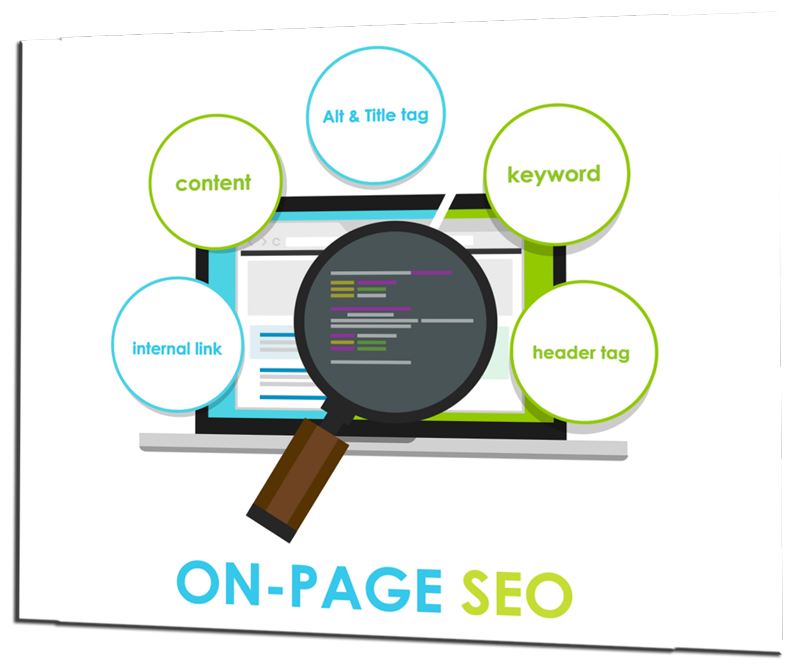
Introduction: Why SEO Matters for New Websites
Getting heard, when you’re building a new website, is becoming very clear to me. It doesn’t matter how great the design or content is; if users can’t find it, it’s like a tree falling in a forest. That’s where SEO — or search engine optimization — comes in. It’s the lifeblood of visibility on the web. This is even more important for new sites who do not have the authority, backlinks build up, or long-established presence of older, more established domains.
Most people find websites through search engines, particularly Google. When I’m looking for information, a product, or a service, I’ll most likely click one of the first few links on the results page. Ranking there isn’t an accident — it’s strategy and work. It’s like a new site is swimming through an ocean, and it has no track record or data, so the odds are against it, and SEO offers a sciency way for their site to have a fair game.
And while I had previously seen SEO as an attempt to “beat” other companies, I now realize that it’s about ensuring users can find exactly what they want — and not having your competitors hide the fact that your website can solve whatever problem they’ve got. It affects everything from page structure, content quality, keyword targeting, and user experience—all elements that breed trust among search engines and visitors.” This is because SEO is not a quick fix, but rather a long-term investment. But for a newly launched website, it is a non-negotiable first step.
In the absence of a purposeful search engine optimization (SEO) strategy, new websites run the danger of being lost among billions of web pages that already exist. This why YOU should take SEO seriously from scrupulous before the 1st visitor lands.

Conducting Thorough Keyword Research
The first thing I do when I start working with SEO of a new website is keyword research. By following this process, I can discover the specific keywords and phrases my potential customers are using to search for their relevant information, products, or services in their niches. The choice of keywords can influence organic traffic and align the content with users’ intent.
I start by using keyword research tools such as Google Keyword Planner, Ahrefs, or SEMrush that help me identify search volume, competition level, and related keywords. For a site that is new on the scene, my focus is on a balance of high-volume keywords with lower competition, which provides me with the best opportunity to rank quicker. Furthermore, I try to go for long-tail keywords because they usually indicate a more specific user intent and convert better.
After I’ve developed a shortlist of prospective keywords, it’s time to get into a little search intent analysis. I question whether users searching that term are seeking information, looking to purchase a product, or just browsing. This allows me to better match the type of content I provide — whether it be blog posts, landing pages, product descriptions — with what users are looking for, thus increasing engagement.
I also analyze competitors by seeing what keywords they’re ranking for and what opportunities they’ve missed. It gives me a perspective of their best-ranking pages, which helps me identify gaps I can wedge in with unique, helpful content.
Finally, I sort keywords into primary and secondary buckets and match them to pages on my site. This helps ensure all content is focused and prevents keyword cannibalization. With thorough keyword research, I strategically prepare each piece for optimal SEO visibility.

Optimizing On-Page Elements: Titles, Headings, and Meta Descriptions
When I focus on optimizing on-page elements, I know the details matter because search engines rely on these signals to understand my content. Titles, headings, and meta descriptions are pivotal in driving both search engine rankings and user engagement.
Crafting Effective Titles
The title tag is one of the first things both search engines and users notice about my webpage. I aim to keep it concise, under 60 characters, while including my primary keyword naturally. A compelling title not only improves click-through rates (CTR) but also signals relevance to search engines. I always prioritize clarity and avoid keyword stuffing, making sure my title matches the intent of the content. Adding words like “How To,” “Best,” or “Guide” can make titles more engaging for users.
Structuring Headings Strategically
Headings (H1, H2, H3, etc.) help both users and search engines navigate my content. I use a clear H1 tag for the page’s main topic, ensuring that it includes the target keyword. Subheadings, like H2s and H3s, are where I break my content into digestible sections, improving readability. I structure my headings hierarchically to guide the reader while organizing the page logically. This also helps search engine crawlers better understand the importance of each section.
Writing Compelling Meta Descriptions
While meta descriptions don’t directly impact rankings, I use them strategically to persuade readers to click on my page in search results. I stick to 150–160 characters and incorporate the primary keyword naturally. I make it compelling by focusing on the benefits users will get from reading the content. Including a call-to-action like “Learn more” or “Find out here” often improves CTR. Beyond keywords, I ensure that the meta description accurately reflects the page content.
By thoroughly optimizing these elements, I increase my chances of ranking higher while also drawing the attention of my target audience.

Building High-Quality Backlinks for Credibility on First Page
When I focus on improving a website’s SEO, building high-quality backlinks becomes a non-negotiable priority. Backlinks act as trust signals for search engines, adding authority to my site and helping it rank higher in search results. But not every link is beneficial; I know that quality always trumps quantity when it comes to backlinks.
To begin, I research relevant websites in my niche. I look for opportunities to get backlinks from authoritative domains that align with my content. For example, guest posting is one effective approach I’ve used. By writing insightful, well-researched articles for reputable sites, I gain exposure and earn a valuable link in return.
I also pay attention to broken link building. When I find outdated or dead links on high-authority pages, I suggest replacing them with my content that adds value. This method not only helps the site owner fix an issue but also positions my website as a resource.
Local citations are another tactic I employ. I ensure my website is listed on trusted local directories and industry-specific platforms. These citations often come with backlinks and build location-based credibility, which search engines favor.
Creating shareable content has been one of the most organic ways I’ve attracted backlinks. When I publish unique infographics, data-driven reports, or thought-provoking blog posts, I make it easy for others to link back to my work.
Lastly, relationship-building stands out in my strategy. I engage with other bloggers, journalists, and influencers in my field. Networking helps me secure natural backlinks through collaborations or mentions.
Backlinking requires consistency and effort. By focusing on earning links from credible sources, I ensure my website gains the trust and recognition it deserves over time.

Focusing on Website Speed and Mobile Optimization
When I prioritize my website’s speed, I know I’m creating a better experience for visitors while signaling to search engines that my site is user-friendly. Page speed is a critical ranking factor, and I aim to ensure my site loads quickly on both desktop and mobile devices. A sluggish website not only frustrates users but also leads to higher bounce rates, which could negatively impact search rankings. To improve speed, I compress images, use caching plugins, and minimize HTTP requests, ensuring my site maintains streamlined performance.
I also focus heavily on making my website mobile-friendly because I recognize that more users than ever are browsing on their phones. Search engines like Google heavily prioritize mobile optimization. I adopt responsive design practices, which allow my website to adjust seamlessly to the screen size or resolution of any device. This ensures my content remains accessible and visually appealing to mobile users. Additionally, I validate my mobile performance using tools like Google’s Mobile-Friendly Test or PageSpeed Insights to identify areas needing improvement.
There are specific strategies I follow to keep my site optimized:
- I regularly audit image sizes, ensuring they are compressed but still high-quality.
- I enable browser caching to store static files, reducing load times for returning visitors.
- I choose fast, reliable hosting to ensure stable performance during high traffic.
- I test mobile usability by navigating my site on different devices and resolving any issues I notice, such as broken layouts or hard-to-read text.
By maintaining speed and prioritizing mobile optimization, I ensure my site meets both user expectations and search engine standards every step of the way.

Creating High-Value Content that Engagements and Converts
When I aim to create content for a new website, my first rule is to focus on delivering value to the audience. High-value content doesn’t just serve search engines; it serves real people who are visiting the site. The key is understanding my audience’s needs, behaviors, and pain points to craft material that solves their problems while keeping them engaged.
I start by conducting thorough keyword research to identify relevant topics. However, I don’t stop at simply incorporating keywords; I focus on content depth. By providing in-depth, well-researched pieces, I ensure visitors leave with tangible takeaways. For example, I use statistics, case studies, and actionable advice to build credibility and relevance. This positions my content as both informative and reliable.
To boost engagement, I make sure every piece of content has a clear structure. Lists, clear headings, and short paragraphs make information easier to digest. Incorporating visual elements—like images, infographics, and videos—helps break up text while adding more value. By combining visual aids with compelling copy, I can hold a reader’s attention for longer.
Strong calls-to-action are critical in converting visitors into leads or customers. I strategically place CTAs within content, urging users to subscribe to newsletters, download resources, or make a purchase. These prompts need to feel natural and relevant rather than intrusive.
Lastly, I continuously update and optimize my content. As user needs and search intent evolve, keeping content fresh and aligned with current trends maximizes its long-term relevance and effectiveness.
Using Internal Linking to Strengthen Site Structure
When it comes to improving SEO, I believe internal linking is one of the most overlooked yet essential strategies for building a solid site structure. Internal links connect the pages within your website, helping both users and search engines navigate your content more effectively. By using internal linking strategically, I can improve overall site navigation and ensure that search engines fully understand the relationship between different pieces of content.
One key aspect I focus on is creating a hierarchy within the site. By linking from high-level pages, such as category or product pages, down to more specific ones, I create a clear structure that search engine crawlers can easily follow. This also helps users journey through the website naturally, reducing bounce rates and improving engagement.
I always emphasize linking to cornerstone or high-priority content. These are the pages I want to rank higher in search engine results. For instance, if I’ve written a blog post that introduces an essential industry topic, I’ll link back to it from multiple related posts to signal its importance to search engines. This process redistributes authority and strengthens the visibility of that key page.
To make internal linking truly effective, I ensure my anchor text—the clickable text in the link—is descriptive and relevant. This gives both users and search engines a strong context of what to expect on the linked page. Instead of vague phrases like “click here,” I use specific, keyword-rich anchor text that aligns with the page’s content.
Additionally, I review broken or outdated links during regular site audits. Broken links can hurt the user experience and detract from SEO gains. By keeping internal links accurate and up-to-date, I ensure that my website maintains credibility and enhances authority.
Finally, I leverage breadcrumbs and contextual links within my site. Breadcrumbs provide an easy navigation trail and further strengthen site structure, while contextual links placed within content guide users naturally to related topics. With these practices, I create a logical flow that benefits both human visitors and search engine algorithms.

Leveraging Local SEO Tactics for Google Reach
When I focus on local SEO, I prioritize tailoring strategies to enhance my website’s visibility within specific geographical areas. Targeting a local audience starts with keyword research that includes location-specific phrases. For example, instead of using “electronics store,” I’d aim for “electronics store in Austin.” These long-tail keywords help me connect directly with users in a specific area who are actively searching for services or products I offer.
One of the first steps I take is creating or optimizing my Google Business Profile. A detailed and accurate profile ensures my business appears in local search results, Google Maps, and even “near me” searches. I pay attention to details like my business address, phone number, operating hours, and category. I also encourage customers to leave reviews since good reviews enhance trustworthiness and boost rankings.
Using local citations is another effective approach. I ensure my business is consistently listed on directories like Yelp, Yellow Pages, and niche-specific industry websites. This consistency, known as NAP (Name, Address, Phone number), signals to search engines that my website is trustworthy and relevant to the local area.
Additionally, I optimize my website content to reflect local intent. For instance, I include service area pages or blog posts about regional events or topics. Implementing location-based schema markup also allows search engines to understand my local focus better.
To drive engagement, I use social media platforms to promote local content and events. Participating in community-driven efforts or sponsoring local activities also earns backlinks from trusted local entities. These not only enhance my website’s authority but also improve my overall geographical reach.
Tracking Progress with Analytics and Adjusting Strategies
When I work on improving a website’s SEO, tracking my progress is crucial. Search engines rely on algorithms, and I need to know which parts of my strategy are working and which require adjustments. Analytics tools like Google Analytics and Google Search Console play a significant role here, helping me monitor traffic trends, user behavior, and keyword performance.
One of the first things I do is keep an eye on organic traffic. I look at how much of my traffic comes from search engines and whether it’s growing steadily. If I notice a drop, I go back to investigate what might be causing the decline—anything from a technical SEO issue to changing search intent.
Next, I analyze key performance metrics, such as bounce rate, click-through rate (CTR), and dwell time. For example, if a page has a high bounce rate, it might indicate that the content isn’t meeting user expectations, prompting me to refine it or add more relevant information. CTR, on the other hand, shows how well my meta titles and descriptions are attracting clicks in search results.
Keywords also require constant monitoring. I use keyword tracking tools to see how my target keywords are ranking and if new keywords are surfacing within my niche. If I see an opportunity to optimize for new terms, I make adjustments to my content to capture that traffic.
I don’t stop at monitoring numbers—data must translate into action. I schedule regular audits to ensure I stay on top of on-page and off-page factors. By continuously reviewing and refining my strategy based on analytics, I can adapt to changes in the search landscape and sustain long-term growth.
Harnessing Social Media to Complement Your SEO Efforts
When I think about the connection between social media and SEO, I realize they’re two sides of the same coin. While social media doesn’t directly impact search engine rankings, it enhances the visibility and engagement that can fuel your SEO strategy. By using strategic approaches, I make sure to align my social media efforts with SEO goals seamlessly.
First, I focus on sharing optimized content from my website across social platforms. When I publish a blog post or upload a valuable resource, I make it a habit to craft compelling captions and include relevant keywords. This not only attracts my audience but encourages them to engage, click, and share—a critical factor for driving referral traffic and building backlinks.
I’ve also found that using hashtags thoughtfully can amplify reach. On platforms like Instagram, Twitter, or LinkedIn, I choose hashtags that represent industry-specific keywords. This increases content exposure to niche audiences and supports the discoverability of my brand.
Social profiles can further boost SEO when they’re optimized. I ensure my profiles contain consistent branding, a clear description, targeted keywords, and a link to my website. These steps improve credibility and provide a direct portal for social audiences to explore my content.
Engagement matters, too. I don’t just post content and leave. Instead, I actively participate in conversations, respond to comments, and encourage discussions. This builds trust, strengthens user relationships, and subtly increases brand recall—key factors that can indirectly support SEO over time.
Collaboration with influencers or industry leaders is another aspect I leverage. Whenever they amplify my content to their followers, I notice a spike in traffic. These moments offer opportunities for acquiring inbound links, which remain a fundamental ranking signal.
By integrating social media efforts strategically, I ensure my online presence grows holistically, making SEO outcomes even more impactful.
Avoiding Common SEO Mistakes
When I first delved into SEO, I quickly learned how easy it is to fall into traps that can harm search rankings rather than improve them. Many of these mistakes are avoidable, yet they’re surprisingly common. Let me walk you through the ones I’ve encountered most often and how I’ve worked to steer clear of them.
One of the biggest missteps I see is publishing low-quality or duplicate content. Google prioritizes unique, value-driven content. If I copy content from elsewhere or fail to offer something original, search engines penalize my site. Instead, I make sure to focus on high-quality, relevant, and engaging material tailored to my audience.
Another error I’ve learned to avoid is neglecting mobile optimization. With mobile traffic outweighing desktop in many niches, I always ensure my site’s design is responsive. If my site isn’t mobile-friendly, not only is user experience negatively impacted, but search engines take note, making it harder for my website to rank competitively.
I’ve also been guilty of overloading webpages with keywords early on. Keyword stuffing not only irritates visitors but signals search engines that the content isn’t natural or helpful. Now, I focus on using keywords strategically and organically, always prioritizing readability over ranking manipulation.
Ignoring site speed can be another silent killer for rankings. If my website loads slowly, visitors are more likely to leave. I regularly audit my site to minimize large images, reduce server requests, and leverage caching tools to improve load times. Speed not only fuels a better user experience but directly enhances SEO.
Lastly, I watch out for poor backlink practices, like purchasing backlinks or associating with spammy websites. Quality always outweighs quantity in link-building. So, I build genuine relationships and focus on earning valuable, authoritative links instead of chasing shortcuts.
By staying vigilant and sidestepping these pitfalls, I’ve found it easier to set a strong SEO foundation without the worry of penalties or wasted effort.
if you want to know about :Choosing the Right CMS for Your E-commerce Website
Conclusion: The Roadmap to Effective SEO for Faster Ranking
When I approach SEO for a new website, I see it as a structured path that requires thoughtful planning and consistent execution. To rank faster, I focus on leveraging foundational strategies while staying adaptable to search engine algorithm changes. Here’s what I find most effective:
- Keyword Research and Content Optimization I start by identifying the most relevant keywords for my niche. Using tools like Google Keyword Planner or SEMrush, I select ones with high search volume and low competition. Optimizing content for these keywords ensures that search engines understand my website’s focus.
- High-Quality Content Creation I make it a priority to create content that provides genuine value to users. By answering common questions or addressing my audience’s pain points, I naturally attract higher engagement and backlinks.
- Technical SEO Improvements Taking care of on-page technical issues is essential. I focus on page speed, mobile responsiveness, site structure, and proper use of header tags. Ensuring smooth navigation and quick loading times enhances user experience and improves rankings.
- Building Backlinks Strategically For me, earning authoritative and relevant backlinks is a critical step. I reach out to other websites, collaborate on guest posts, or leverage broken link building techniques to enhance my website’s credibility.
- User Experience Matters I continually optimize UX by monitoring bounce rates and session durations. Enhancing readability, integrating clear calls-to-action, and ensuring intuitive design help in retaining visitors and reducing pogo-sticking.
- Regular Analytics Review I habitually study performance through tools like Google Analytics and Search Console. This helps me spot opportunities for improvement, monitor keyword rankings, and refine strategies as needed.
- Staying Updated Finally, I make it a habit to stay informed about the latest SEO trends. Algorithm updates impact rankings, so adapting quickly ensures long-term success.
By following this roadmap, I know I can set a strong foundation for faster and sustainable rankings for any new website.
Frequently Asked Questions
The time required for a new website to rank on Google varies, but typically, it can take 3 to 6 months with proper SEO strategies. Factors like keyword competition, content quality, backlinks, and site authority affect the ranking speed.
Some of the most effective SEO strategies for new websites include:
Keyword research and optimization
High-quality content creation
On-page SEO (meta tags, headings, internal linking)
Technical SEO improvements (site speed, mobile-friendliness)
Building high-authority backlinks
Local SEO optimization (Google My Business, citations)
Regular content updates and blogging
Yes, keyword research remains crucial. It helps identify what users are searching for, enabling website owners to create relevant and targeted content. Using long-tail keywords, semantic keywords, and optimizing for search intent can improve rankings.
New websites can acquire backlinks through:
Guest blogging on authoritative sites
Creating shareable, valuable content
Reaching out to industry influencers
Submitting to niche directories and forums
Leveraging social media for content promotion
Yes, website speed is a major ranking factor. A slow-loading website increases bounce rates, negatively impacting user experience and rankings. Optimizing images, using a CDN, and reducing unnecessary scripts can improve speed.
With Google’s mobile-first indexing, a mobile-friendly website is essential. Sites that are not optimized for mobile devices may rank lower in search results. Ensure responsive design, fast loading speeds, and easy navigation for mobile users.
While social media signals are not a direct ranking factor, they help increase brand visibility, referral traffic, and content shares, indirectly improving SEO performance. A strong social presence can also lead to more backlinks.
Technical SEO ensures that a website is crawlable, indexable, and user-friendly. Key aspects include:
XML sitemaps
Robots.txt optimization
Schema markup
Fixing broken links and errors
Secure HTTPS implementation
Consistency is key. Publishing high-quality, in-depth content at least once a week can boost rankings and increase user engagement. Regularly updating older content also helps maintain relevance.
Common SEO mistakes to avoid:
Ignoring keyword research
Not optimizing for mobile users
Poor internal linking structure
Low-quality or duplicate content
Neglecting site speed and technical SEO
Buying backlinks (can lead to penalties)

